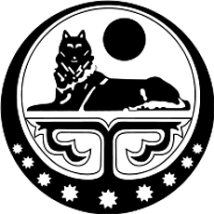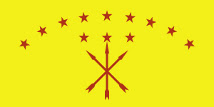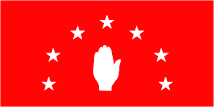The decimal numeral system is based on 10. The vigesimal numeral system is based on 20. It is generally believed that the decimal numeral system was originated from the number of fingers (and thumbs) on both hands while the vigesimal numeral system was originated from the number of fingers (and thumbs) on both hands plus the number of toes on both feet.
Instead of the decimal numeral system, many Caucasus languages have the vigesimal numeral system. Some linguists tend to consider it as a mixed decimal and vigesimal system because the numbers from 11 to 19 are formed according to the decimal system:
11 = 10 + 1
12 = 10 + 2
13 = 10 + 3
14 = 10 + 4
15 = 10 + 5
16 = 10 + 6
17 = 10 + 7
18 = 10 + 8
19 = 10 + 9
The Batsbi language follows the vigesimal system in the most strict way as it was described by Y. D. Desheriev in his book The Batsbi Language (published in 1953), pp. 190 - 197.
30 = 20 + 10
31 = 20 + 11
32 = 20 + 12
40 = 2 x 20
41 = 2 x 20 + 1
42 = 2 x 20 + 2
50 = 2 x 20 + 10
51 = 2 x 20 + 11
52 = 2 x 20 + 12
60 = 3 x 20
61 = 3 x 20 + 1
62 = 3 x 20 + 2
70 = 3 x 20 + 10
71 = 3 x 20 + 11
72 = 3 x 20 + 12
80 = 4 x 20
81 = 4 x 20 + 1
82 = 4 x 20 + 2
90 = 4 x 20 + 10
91 = 4 x 20 + 11
92 = 4 x 20 + 12
100 = 5 x 20
101 = 5 x 20 + 1
102 = 5 x 20 + 2
120 = 6 x 20
121 = 6 x 20 + 1
122 = 6 x 20 + 2
140 = 7 x 20
141 = 7 x 20 + 1
142 = 7 x 20 + 2
160 = 8 x 20
161 = 8 x 20 + 1
162 = 8 x 20 + 2
180 = 9 x 20
181 = 9 x 20 + 1
182 = 9 x 20 + 2
200 = 10 x 20
220 = 11 x 20
240 = 12 x 20
260 = 13 x 20
280 = 14 x 20
300 = 15 x 20
320 = 16 x 20
340 = 17 x 20
360 = 18 x 20
380 = 19 x 20
400 = 20 x 20
420 = 20 x 20 + 20
440 = 20 x 20 + 2 x 20
460 = 20 x 20 + 3 x 20
480 = 20 x 20 + 4 x 20
500 = 20 x 20 + 5 x 20
520 = 20 x 20 + 6 x 20
540 = 20 x 20 + 7 x 20
560 = 20 x 20 + 8 x 20
580 = 20 x 20 + 9 x 20
600 = 20 x 20 + 10 x 20
620 = 20 x 20 + 11 x 20
640 = 20 x 20 + 12 x 20
660 = 20 x 20 + 13 x 20
680 = 20 x 20 + 14 x 20
700 = 20 x 20 + 15 x 20
720 = 20 x 20 + 16 x 20
740 = 20 x 20 + 17 x 20
760 = 20 x 20 + 18 x 20
780 = 20 x 20 + 19 x 20
800 = 2 x 20 x 20
820 = 2 x 20 x 20 + 20
840 = 2 x 20 x 20 + 2 x 20
860 = 2 x 20 x 20 + 3 x 20
880 = 2 x 20 x 20 + 4 x 20
900 = 2 x 20 x 20 + 5 x 20
920 = 2 x 20 x 20 + 6 x 20
940 = 2 x 20 x 20 + 7 x 20
960 = 2 x 20 x 20 + 8 x 20
980 = 2 x 20 x 20 + 9 x 20
1000 = 2 x 20 x 20 + 10 x 20
1020 = 2 x 20 x 20 + 11 x 20
1040 = 2 x 20 x 20 + 12 x 20
1060 = 2 x 20 x 20 + 13 x 20
1080 = 2 x 20 x 20 + 14 x 20
1100 = 2 x 20 x 20 + 15 x 20
1120 = 2 x 20 x 20 + 16 x 20
1140 = 2 x 20 x 20 + 17 x 20
1160 = 2 x 20 x 20 + 18 x 20
1180 = 2 x 20 x 20 + 19 x 20
1200 = 3 x 20 x 20
1600 = 4 x 20 x 20
2000 = 5 x 20 x 20
2400 = 6 x 20 x 20
2800 = 7 x 20 x 20
3200 = 8 x 20 x 20
3600 = 9 x 20 x 20
4000 = 10 x 20 x 20
4400 = 11 x 20 x 20
4800 = 12 x 20 x 20
5200 = 13 x 20 x 20
5600 = 14 x 20 x 20
6000 = 15 x 20 x 20
6400 = 16 x 20 x 20
6800 = 17 x 20 x 20
7200 = 18 x 20 x 20
7600 = 19 x 20 x 20
8000 = 20 x 20 x 20
8400 = 21 x 20 x 20
8800 = 22 x 20 x 20
9200 = 23 x 20 x 20
9600 = 24 x 20 x 20
10000 = 25 x 20 x 20
and so on
By the time Desheriev researched the Batsbi language, Batsbis began to drop this system. They borrowed the words for 100 and 1000 from Georgian. Thus, they began to simplify this system. Likewise, in the Chechen and Ingush languages, the vigesimal system is simplified (originally, it was the same as in the Batsbi language).
30 = 20 + 10
31 = 20 + 11
32 = 20 + 12
40 = 2 x 20
41 = 2 x 20 + 1
42 = 2 x 20 + 2
50 = 2 x 20 + 10
51 = 2 x 20 + 11
52 = 2 x 20 + 12
60 = 3 x 20
61 = 3 x 20 + 1
62 = 3 x 20 + 2
70 = 3 x 20 + 10
71 = 3 x 20 + 11
72 = 3 x 20 + 12
80 = 4 x 20
81 = 4 x 20 + 1
82 = 4 x 20 + 2
90 = 4 x 20 + 10
91 = 4 x 20 + 11
92 = 4 x 20 + 12
100 = 100
101 = 100 + 1
102 = 100 + 2
110 = 100 + 10
111 = 100 + 11
112 = 100 + 12
120 = 100 + 20
121 = 100 + 20 + 1
122 = 100 + 20 + 2
130 = 100 + 20 + 10
131 = 100 + 20 + 11
132 = 100 + 20 + 12
140 = 100 + 2 x 20
141 = 100 + 2 x 20 + 1
142 = 100 + 2 x 20 + 2
150 = 100 + 2 x 20 + 10
151 = 100 + 2 x 20 + 11
152 = 100 + 2 x 20 + 12
160 = 100 + 3 x 20
161 = 100 + 3 x 20 + 1
162 = 100 + 3 x 20 + 2
170 = 100 + 3 x 20 + 10
171 = 100 + 3 x 20 + 11
172 = 100 + 3 x 20 + 12
180 = 100 + 4 x 20
181 = 100 + 4 x 20 + 1
182 = 100 + 4 x 20 + 2
190 = 100 + 4 x 20 + 10
191 = 100 + 4 x 20 + 11
192 = 100 + 4 x 20 + 12
200 = 2 x 100
220 = 2 x 100 + 20
240 = 2 x 100 + 2 x 20
260 = 2 x 100 + 3 x 20
280 = 2 x 100 + 4 x 20
300 = 3 x 100
400 = 4 x 100
500 = 5 x 100
600 = 6 x 100
700 = 7 x 100
800 = 8 x 100
900 = 9 x 100
1000 = 1000
2000 = 2 x 1000
3000 = 3 x 1000
4000 = 4 x 1000
5000 = 5 x 1000
and so on
The Chechen numbers 1 through 5 have some special characteristics that the numbers beginning with 6 do not have:
1. The Chechen numbers 1 through 5 end at the glottal stop (Arabic letter hamza) while other numbers do not.
2. The Chechen numbers 1 through 5 have declension while other numbers do not.
3. The Chechen numbers 1 through 5 have two forms (dependent and independent) while other numbers have only one form.
On the basis of these facts, N. F. Yakovlev in his book The Morphology of the Chechen Language (published in 1960), p. 59 made a suggestion that the original number system in Chechen was quinary (that is, the system based on 5). Thus, the Chechen language has some elements of the three numeral systems: quinary, decimal, and vigesimal. However, the main system is definitely vigesimal.
In the Avar language, the vigesimal system is simplified even more than in Chechen and Ingush because Avar has a special word for 30.
30 = 30
40 = 2 x 20
50 = 2 x 20 + 10
60 = 3 x 20
70 = 3 x 20 + 10
80 = 4 x 20
90 = 4 x 20 + 10
100 = 100
120 = 100 + 20
130 = 100 + 30
140 = 100 + 2 x 20
150 = 100 + 2 x 20 + 10
160 = 100 + 3 x 20
170 = 100 + 3 x 20 + 10
180 = 100 + 4 x 20
190 = 100 + 4 x 20 + 10
200 = 2 x 200
and so on
The Chimgui dialect of the Circassian language (it is one of the western dialects of the Circassian language and is also known as the Agyghean language) has special words for 30 and 50. Their word for 50 literary means "a half of one hundred."
30 = 30
40 = 2 x 20
50 = 50
60 = 3 x 30
70 = 3 x 30 + 10
80 = 4 x 20
90 = 4 x 20 + 10
100 = 100
130 = 100 + 30
140 = 100 + 2 x 20
150 = 100 + 2 x 20 + 10
160 = 100 + 3 x 20
170 = 100 + 3 x 20 + 10
180 = 100 + 4 x 20
190 = 100 + 4 x 20 + 10
200 = 2 x 100
and so on
The Kabardian dialect of the Circassian language (it is one of the eastern dialects of the Circassian language and is also known as the Kabardian language) uses the regular decimal system. The Tabasaran language also uses the regular decimal system, although some of its dialects use the vigesimal system. The Dargin language has the regular decimal system as well.
The vigesimal system is not unique for the Caucasian languages. For example, the French language has some elements of the vigesimal system:
70 = 60 + 10
71 = 60 + 11
72 = 60 + 12
80 = 4 x 20
90 = 4 x 20 + 10
91 = 4 x 20 + 11
92 = 4 x 20 + 12
Sunday, October 3, 2010
Subscribe to:
Posts (Atom)






